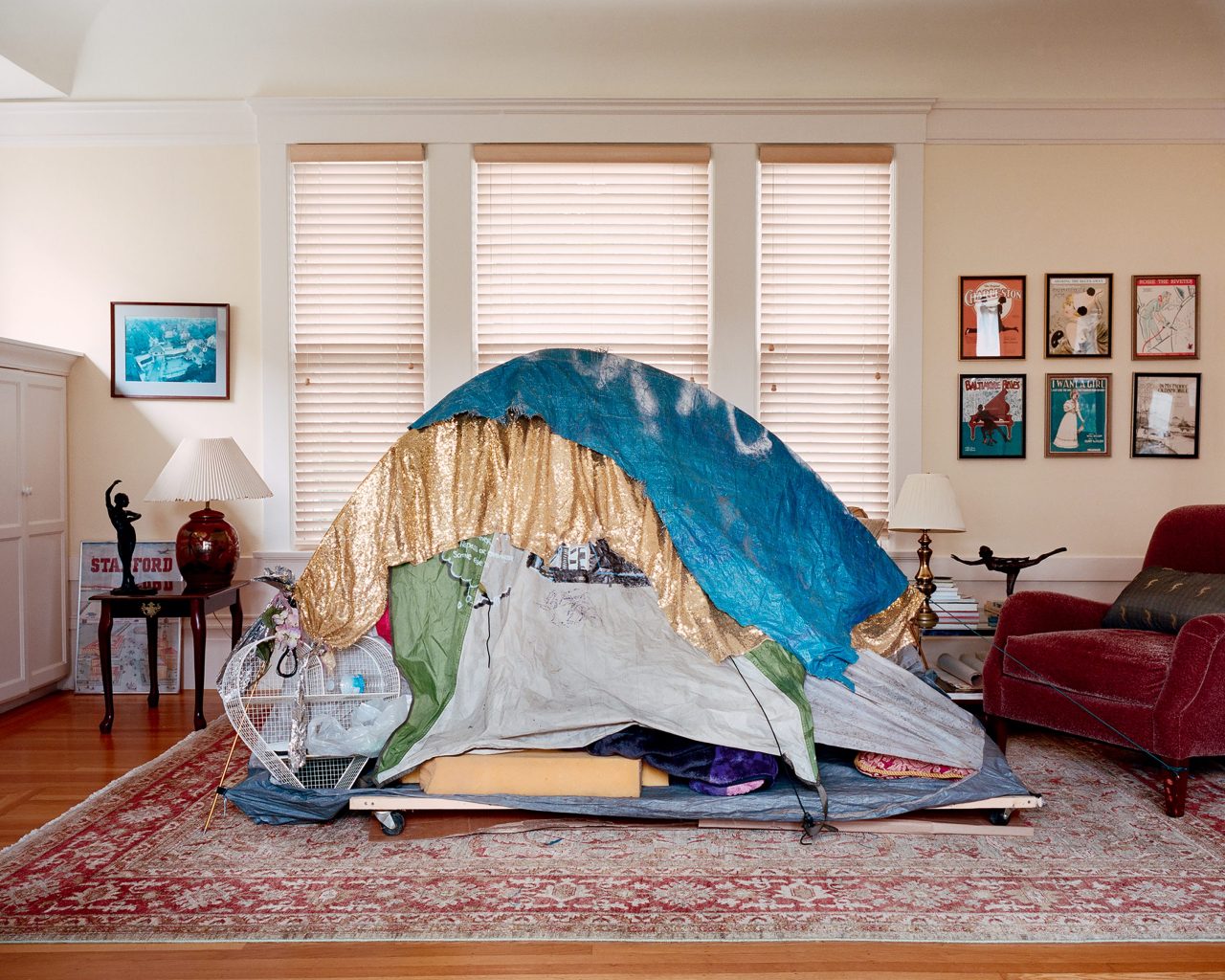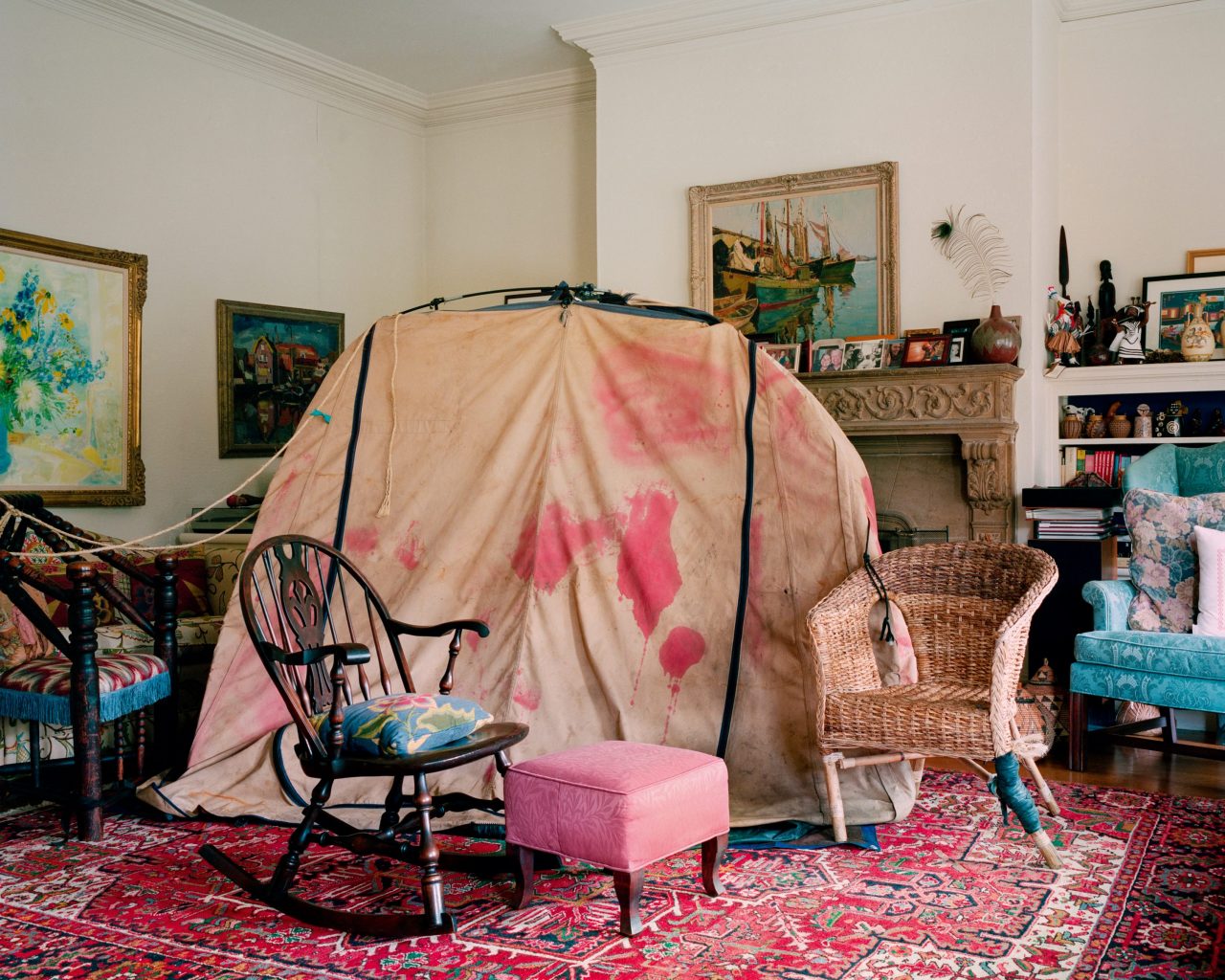Living Room
Housing is core to understanding inequality. So what does the research tell us about how housing policy is playing out – for better or worse – around the world?
Land – who owns it, what you do with it and what it costs – is core to understanding growing inequality in cities across the world. Shanty towns next to gated communities in Accra; Georgian mansions close to sleeping bag-lined subways in London; asset-rich pensioners living with fuel poverty; millennials locked out of the housing market – if housing policy is meant to ensure fair access to a home for all, it is failing around the world.
Dr Richmond Ehwi, Research Associate at the Cambridge Centre for Housing and Planning Research (CCHPR), says this is because, globally, we have moved away from the idea of engineering fairness towards relying on the market to bring justice – which it does not.

He explains how this ideological shift happened in his home country of Ghana. “Before colonisation, land in Ghana was communal property,” he says. “It wasn’t owned by individuals and it wasn’t tradeable. You’d go to your community leader and say you needed land for farming and to live on, and you got access to land because of your membership of the community. Post-independence, there was a developmentalist state policy, with the welfare state providing housing to bring dignity, not as a commodity.
“During the 1980s, with economic upset in developing countries, the World Bank brought in structural adjustment, moving housing policy towards a neoliberal, capitalist system based on market price and competition. In this system, the state steps back, and the market must create the conditions of justice – property rights and land titling – so that investors can be satisfied, rather than to fulfil the needs of the population. Market logic is based on profit – what you can sell, not what people need.”
It’s starting to dawn on political leaders that this approach – with a gated community next to a poor area with no running water – is not working
But it’s starting to dawn on political leaders that this current approach – with a gated community next to a poor area with no running water – is not working, he says. “If the state doesn’t reclaim housing, to ensure that provision doesn’t only benefit one tiny section of society, then they will have a problem.”
In the UK, a similar time bomb is ticking, this time comprising an out-of-date welfare state model and an ageing population, says Dr Gemma Burgess, Director of the CCHPR. “For the past 50 years in Britain, we’ve had a welfare state model that assumes that pensions can be small, because in later life people will be without housing costs,” she says. “But that model is being disrupted. People are living longer. And unless they have access to the bank of mum and dad, first time buyers are buying later in life, so their mortgages run later. And the longer you have mortgages, the less the model holds up. This is hard to change, however, without addressing pensions at the same time.

“In parallel, we’re not building enough new homes. We’re not building social housing; we’re choosing to spend on housing benefit instead. The government set itself a target of 300,000 new houses a year, and they’ve built well under that. Our construction industry depends on an ageing workforce and migrant labour, and we build slowly and over budget.”
Then there’s the problem of old housing stock, with low accessibility. “Few homes are properly adapted for older people,” says Burgess. “We rely on older people downsizing to free up housing stock, but that’s a myth – grandparents may need space to work or look after grandchildren, or they may be asset-rich but living in poverty, and selling won’t release enough equity.
“We’re locked into a system that depends on the growth of house prices, which is a disaster for affordability. In Cambridge, house prices are almost 14 times average earnings, yet we don’t want housing prices to fall. What we need is a more diverse range of housing options.”

That range of housing options should include rental, she says, as in some European countries, where people can spend their whole lives happily renting. “Renting itself is not a problem, but we’re not nudged towards it. We would need more tenants’ rights and secure tenancies. Home ownership is a very powerful, dominant idea.”
It’s the same in Accra, says Ehwi, where young people are forced into “coupling up” before they’re ready, to be able to buy a home. And in Tehran, too, home ownership is culturally important yet remains a pipe dream for most of the population, according to Dr Reyhaneh Shojaei, Research Associate at the CCHPR. “The fragmented political situation in Iran is reflected in the housing market,” says Shojaei. “There is no social housing, and the housing sector is 99 per cent dominated by private actors.” She describes a system monopolised by small developers, who will approach the owners of a semi-detached house, for example, and offer them a share in the profits made from knocking it down and building a high rise in its place. “It’s a system that favours developers and landowners. Plus, there are no mortgages, so people are struggling to access housing.”
It’s not in one city or one country – the global experience is that the housing market usually fails to meet demand and provide affordable housing
The answer in Tehran, as in Accra or London, she says, is that government must intervene. “It’s not in one city or one country – the global experience is that the housing market usually fails to meet demand and provide affordable housing for the population. In London, Covid has worsened the situation, pushing people on low incomes out of the cities, with the quality of homes and security of tenure decreasing.”
Shojaei agrees with Burgess that we need a much more joined up approach to housing. “We need to align planning, economic and housing policy. For example, a new affordable housing scheme must also consider mortgages and interest rates. Sometimes, new housing policy and fiscal policy pull in opposite directions.”
Something like Section 106 in the UK, which puts some social responsibility on to the developer, can be helpful in addressing inequality, says Shojaei. “We criticise local authorities because they don’t have enough money or skilled people, but the principle of forcing developers to negotiate is something that could work. We need a comprehensive scheme that considers investors, landowners and builders together. Our financial system means that investors are looking for profit, so how do we make it attractive for them to invest in affordable housing? Local authorities could provide access to land in instalments, to lower the initial costs, and offsite manufacturing could make housebuilding quicker and cheaper. Seeing housing in silos doesn’t work.”

Burgess is co-investigator on the Construction Innovation Hub, a partnership that aims to drive digital innovation in the UK construction industry. “My work is focusing on what the barriers are to things like offsite manufacturing,” she says. “It’s not the technology – we have that. But we need to know more; you need a golden thread of information to run through the whole process. The Grenfell Tower disaster has been a big push towards getting better built-asset data.
“The supply chain is very fragmented, but we could build virtually first, so everyone engages with the same digital model of a block of flats, for example, before the contractors go on site. It could be tested in this virtual environment to avoid the common situation where builders put up walls then see problems, or with plumbers and electricians sometimes having to ‘make it up as they go along’. That way we also keep all the data in one place going forward, to allow proper management of the safety of materials and of servicing over the long term.”
You also need excellent leadership, she says. “You need a strategy and a road map, you need to know where you’re going, and get people on board. You need to understand what the new models mean for the individuals concerned. People fear job losses, so we need to make sure we are upskilling people all along the supply chain. We also need to get a new generation going into construction.”

Having a digital platform, says Shojaei, could even make house-buying a less lengthy and stressful process. “This integrated platform could be end-to-end – like Amazon – from developers and local authorities being able to select land for development out of what’s available to buyers finding their house, as on Rightmove. And then they could buy it without having to deal with estate agents and mortgage brokers – it would all happen in the one place.”
As ever, visions of a brilliant, digital future come with a caveat. If we focus on the technology rather than the people, we rebuild the same world. “We know the future of planning is digital,” says Burgess, “from smart cities to digital twinning to the Internet of Things. But public bodies and tech companies need to start by thinking about people, and how to engage them from the beginning, including those who are marginalised. They need to think, ‘What do local people need? And how can we build for that?’ Otherwise, we will not tackle inequality.”
Living Room
In this series, Berlin based photographer Jana Sophia Nolle rebuilds temporary homeless shelters in the living rooms of the wealthy. The photos represent housing inequality through an act of artistic intervention, as the worlds of the rich and poor are brought together in stark contrast. The series asks us to consider social questions and connections through a purely material perspective, one not based on human interaction.







